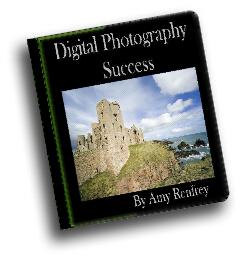 |
Open You Eyes To Digital Night Photography With Colourful Cityscapes And Night Trails
|
|
Digital night photography may not be as popular as normal daylight photography but it offers the opportunity for amazing and breath-taking pictures.
Photographers usually prefer taking pictures during the day because they have the benefit of daylight to provide clear well lit shots.
It is easier for you to capture vibrant colours, scenic views and the like with the help of the sun.
If you ask around, there aren't to many photographers who choose to take pictures at night due to the lack of light. But what they don’t realise is that they are missing out on lot's of spectacular photo opportunties which occur at dawn and dusk.
Digital Night Photography Basics
Compared to taking pictures during the day, night photography is a bit more complex due to the techniques and camera settings that must be used. There are other pieces of equipment that you will also need, mainly tripod and cable release, in order to capture the best night-time shots.I want to suggest to you a few simple tips and rules that you should follow and try to apply as second nature. In no time at all, you will be amazed and excited by what you can achieve with these digital night photography techniques.
Before you delve into digital night photography you must first take note of the various types of equipment that you will need. Most importantly, of course, is your digital camera. You should be familiar with the operation of your camera and it's specifications and features in order to get the best results for your pictures.
One of the additional pieces of equipment that you will need is the tripod. The tripod is a three-legged device that acts as a stand for the camera. The tripod is a necessary tool for digital night photography because it holds the camera in place and avoids blur or camera shake while taking the picture.
Another important aspect that should be considered when taking pictures at night is the shutter speed of the camera. Since there is a lack of light at night, you need a camera that has the ability to provide a longer shutter exposure so as to allow enough light to enter your camera's sensor.
In order to render beautiful night shots, it's best if your camera has a shutter that can be adjusted to stay open for a range of between 3secs-30secs. The longer exposure will help in producing clear pictures with just the right amount of light.
Tips and Strategies For Successful Digital Night Photography
When using your camera for digital night photography, the shutter is usually open for a longer period of time than usual. This makes your camera even more sensitive to motion such as shaking, blurring, etc.As well as your tripod it is also advisable that you use the self-timer of your camera or better still, a cable release. This is just a device that allows you to operate the shutter remotely, so as to avoid touching the camera. This will prevent any blur and noise in your shots that usually occur when using a manual shutter.
If your camera has noise reduction technology, it's best to make use of it in order to achieve clearer photos during the low-light conditions at night.
You will also have to manually set the shutter speed that you want to use as some cameras have varying shutter speeds depending on the mode used.
Cameras using Auto and Program Auto presets can cause your pictures to be under exposed. If your camera uses these modes, then it's best to consult the user manual so that you'll be able to find a mode that allows you to adjust the shutter speed as required.
Another digital photography trick that you can use in low-light conditions is to increase the ISO. Increasing the ISO from 200 to 400/800 adjusts the sensitivity of the image sensor. This enhances the anti-blur ability of your camera. Increasing the ISO is useful if you are having problems with camera stability as it allows you to use a faster shutter speed for the same lighting conditions.
Another tip for taking pictures at night is to use as little zoom as possible. This can cause additional camera shake that can result in blurriness of the picture. Using the flash for digital night photography is also not necessary as it doesn't make any difference to the quality of your pictures. Instead the flash may cause over-exposure or under-exposure of your images.
 |
My friend and business partner Amy Renfrey has a great ebook that covers digital night photography called Digital Photography Success.
It's an excellent choice for photographers who are just starting out as well as those who need a refresher course on basic digital photography tecniques.
Practice Makes Perfect With Night Photography
Just like with other digital photography techniques, it helps to take lots and lots of pictures. This will allow you to compare images and choose the right combination of settings for the perfect shot.You can then become creative and artistic by incorporating different effects such as blurring and slow motion to your advantage. Also try different ISO settings and shutter speeds for added effect. This will further help you improve your skills and your overall development of individuality.
| Didn't find what you're looking for? Search here... |

Custom Search
|
Return from Digital Night Photography to Photography Techniques
Return from Digital Night Photography to Digital Photography Tricks





